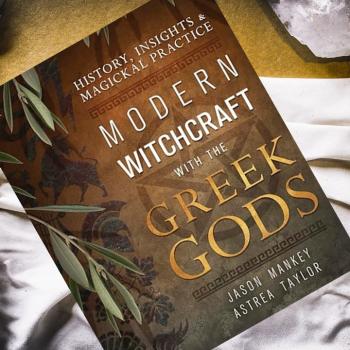
I had heard about Morning Glory for years. Whispers and rumors ran throughout the circles of my Pagan and back-to-nature friends that the seeds of this garden plant could take you places … outta this world.
In 1957, botanical investigator Osmond suggested that the plant was not a hallucinogen, but preferred that the term “psychedelic” (meaning mind-manifesting) be used generically to describe the “consciousness-expanding and psychotheraputic” effects of the herb seed. 2
Ipomoea purpurea is the scientific name for the herbaceous vine usually called the Morning Glory. Native to North America, it has relatives in many parts of the world. The seeds of this, and a few of its cousins, were used by the Aztecs in a variety of ways. According to Francisco Hernandez, physician to the King of Spain in 1651.
“…It cures syphilis and mitigates pain which is caused by chills. It relieves flatulency and removes tumors…”
His list of uses by the shaman healers continues to include bone fractures and dislocations, pelvic troubles in women, and even as an aphrodisiac in the right circumstance. It is an impressive list.
The herb was called coatl-xoxo uhqui (green snake) and the seeds were known as ololiuqui, which means “round thing.” This seed was considered sacred and used commonly by the people, with each patient in a room, alone, and under the supervision of a healer.
This was sacred, and done to promote physical health through use of the oracular and psychedelic chemical compounds found in the seed of the plant. Black seeds were used for men, and brown for women, prepared in special formulae according to need. Further:
“It is remarkable how much faith these natives have in the seed, for…they consult it as an oracle to learn many things… especially those… beyond the power of the human mind to penetrate.”4
Not knowing the proper formulae, most modern attempts by the bravest of my friends and fellow adventurers to follow this blooming oracular seed have been thwarted by taste. The seed is reportedly very sharp tasting, and “hot to the fourth degree” according to Hernandez.4
It can even be toxic in quantities large enough to produce the typical lab-duplicated chemical experience. The healing provided was subtle and sacred — enacted upon souls perhaps more accessible to the healing voice of Mother Nature and less encased by modern noise and pollution than we are today.
The seeds of the plant, if obtained from a commercial seed supplier today, are also likely to be treated with fungicides or other chemicals to increase shelf life and to discourage consumption. 2 These added chemicals are toxic for humans to ingest. Seeds from Morning Glories grown in one’s own garden will not contain these contaminants as long as you do not spray them with insecticides, herbicides, or other poisons.
This is, by no means, a personal recommendation; I could never recommend anything I have not myself explored. Also, because of the psychedelic properties of the seed, cultivation of the plant is banned in some regions of the United States. 5 But, I can also neither confirm nor deny the addition of ololiuqui to my personal Bucket List of things to do before I, y’know, kick it.

Interestingly, the day blooming Morning Glory (Ipomoea purpurea) and night blooming Moonflower (Ipomoea muricata) are in the same plant family, Ipomoea, and these seeds share many of the same medicinal and psychotherapeutic properties with its cousin.
“The seeds of Ipomoea muricata (Linn.) Jacq. (Fam. Convolvulaceae) are commonly known as Kaladana. It is a well reputed drug of Ayurveda (known as Krishnabija) widely used as purgative, febrifuge, cardiac depressant, spasmolytic, hypotensive, antibacterial, and antifungal agent. The seeds are used as Virechana (purgation) for its anthelmintic properties. The seeds are taken along with Saindhav (rock salt) and Shunti (Zingiber officinale); as otherwise, it gives a burning sensation (Shul) in the stomach. The seeds are also incorporated in a herbal preparation known as Divya Churna (Patanjali Pharmacy, Ambala, Haryana, India) indicated for constipation, loss of appetite, and other gastric disorders.” 3

Patheos Pagan on Facebook.

the Agora on Facebook
Adventures in Wortcunning is published on alternate Fridays. Subscribe via RSS or e-mail.
Please use the links to the right to keep on top of activities here on the Agora as well as across the entire Patheos Pagan channel.
Resources:
- http://en.wikipedia.org/wiki/Category:Medicinal_plants
- Ipomoea purpurea: A Naturally Occurring Psychedelic by Charles Savage, Willis W. Harman and James Fadiman (http://www.lycaeum.org/diseyes/olo/glory.txt)
- Isolation and TLC Densitometric Quantification of Lysergol from the Seeds of Ipomoea muricata (Linn.) Jacq. by Shrikant Patil, Manish Nivsarkar, and Sheetal Anandajiwala (http://www.hindawi.com/journals/isrn/2013/134586/)
- Plants of the Gods: Their Sacred, Healing, and Hallucinogenic Powers , pg. 170 by Albert Hofmann & Christian Ratsch, Healing Arts Press, Rochester, VT c. 1998
- The Gardener’s Atlas pg. 122, by Dr. J. Grimshaw, Quarto Publishing, London c. 1998

















